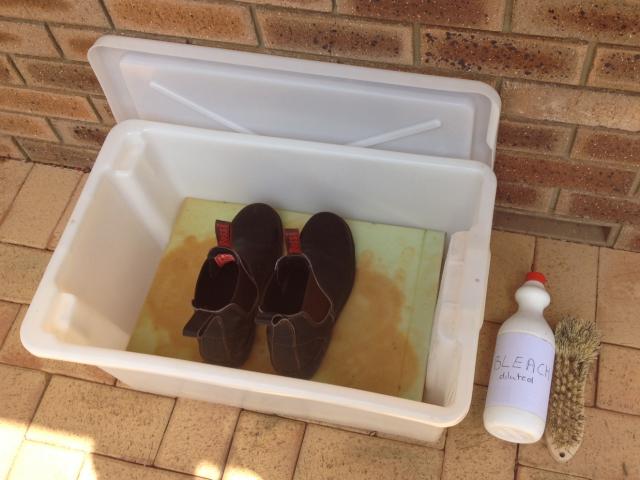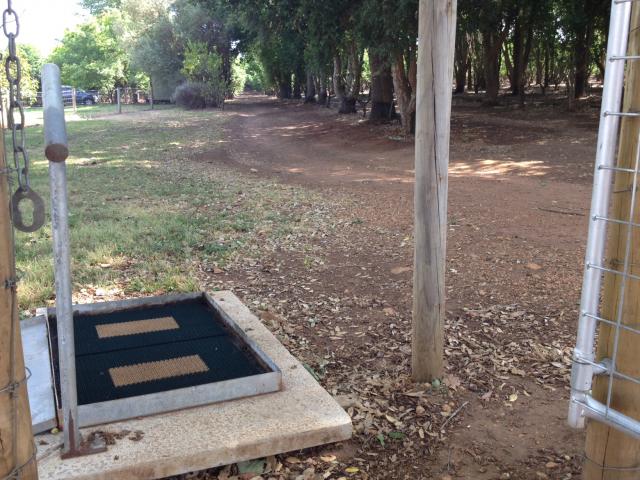People management
People entering the property, including staff, contractors, utility providers and tourists may bring contaminants from overseas, interstate and/or other properties. It is vital that people are informed of the need for biosecurity measures and that they comply with your procedures. Below are some procedures you could implement on your property:
- Limit the number of entry points to the property and ensure adequate signage to inform visitors of the biosecurity requirements for entering the property. Have a visitor register and checklist to ensure all relevant people are made aware of designated parking areas, wash down stations and wash down protocol, permitted areas and any off-limits areas.
- All staff should be briefed on the importance of biosecurity and of the on-farm hygiene practices in place. Staff induction should include the cleaning process of footwear and equipment on entering and exiting the property and of any internal on-farm hygiene requirements.
- A footbath should be installed at the entry to the orchard and used every time the orchard is entered. Footwear needs to be re-cleaned if moving in and out of the truffle orchard. Extra footbaths may be required for movement between different blocks of the orchard if they have different biosecurity levels.
- When using footbaths, the sanitising solution should be changed at least daily. Footwear needs to be free of all soil and organic matter before being sanitised.
- Alternatively, provide footwear that is to be worn on the farm only and not taken off site and is preferably left at the entrance to the orchard, or use disposable overshoes.
- Clothing should also be clean and dirt free, on-farm or disposable overalls are an option.
- Dogs must also be considered in any biosecurity and hygiene protocols. Ensure they are clean, their feet in particular, if they are being brought onto the orchard or moved between multiple blocks with different biosecurity levels. Slip-on booties are an option.
- Use an orchard vehicle, not external vehicle, for the transport of visitors around the property.
Disinfectants can be used in on-farm biosecurity and hygiene practices to disinfect footwear, machinery, vehicles and equipment to prevent the spread of unwanted fungi and soil-borne diseases, both from coming onto your orchard and within the orchard. For truffle orchards, chlorine based bleach is an effective option.
Sanitising footbaths may be fixed or portable. A basic portable foot bath kit is easy to put together. Each kit should contain a scrubbing brush to ensure footwear is free of dirt prior to sanitising, diluted bleach (10%) as the sanitiser and a large plastic tub with a sponge in the base. The bleach is poured over the sponge and people simply step onto the sponge to sanitise their shoes by thoroughly soaking the soles. The kit should be cleaned after each day of use.


Tourism
While tourism activities, including orchard walks and truffle hunts, play an important role in the industry and the surrounding community, they do pose a biosecurity challenge. Such activities need to be evaluated as part of the overall biosecurity plan for your truffle orchard and business, and any entrants into the orchard need to observe the farm biosecurity and hygiene protocols. Ideally limit tourism activities to a smaller restricted section of your truffle orchard.
Truffle dogs and handlers
Truffle dogs and their handlers are an integral part of any truffle orchard operation. However, as they often operate on more than one property, they do pose a biosecurity challenge. Any vehicles and equipment they are bringing onto the truffle orchard must be treated to the same protocols as any other. The dogs and their handler should be clean and follow standard on-farm biosecurity and hygiene practices.
